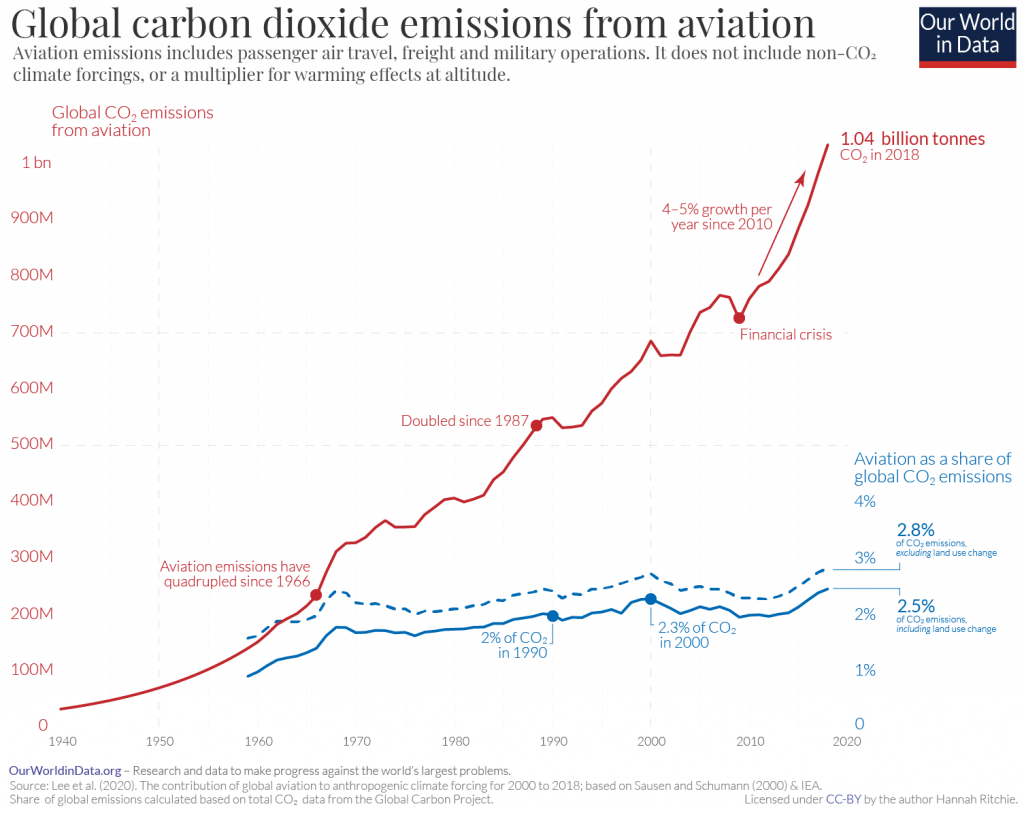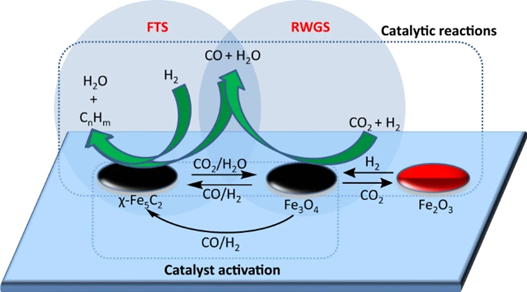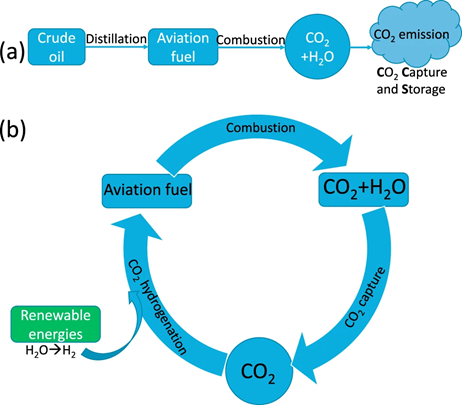Each year, many innovations are driving positive change to reduce our carbon footprint. Most of all, they are reaching targets set by the UN’s Sustainable Development Goals. Scientists worldwide have thought about capturing carbon dioxide and involving the molecule in reactions that yields more wanted products than unwanted. That is the aim of the future – jet fuel from carbon dioxide. The aviation industry has set goals to reduce 50% of its carbon emissions by 2050 (IATA, n.d.) despite producing an average of 2% – 3% of the world’s carbon emissions (ATAG, 2020, IATA, n.d). Moreover, this includes passenger and cargo flights (Ritchie, 2020). Climate action is more urgent than ever.

Depending on the aviation company used as a reference, the amount of carbon dioxide produced per flight will vary. For example, a flight from London’s Heathrow Airport to Los Angeles’ LAX is approximately 11 hours long. According to Atmosfair.de, this would result in 1,650 kilograms of carbon dioxide emitted. That equates to 150 kg of carbon dioxide released per hour of flying (Kommenda, 2019). On the other hand, Carbon Independent brings another method of calculating carbon dioxide emissions (you can check out their basis on their website). They calculated that one hour of flying reels about 250 kg of carbon dioxide. From this calculation, the same flight from Heathrow to LAX will produce 2,750 kg of carbon dioxide. As a comparison, this is equal to an average Australian household generating 1,500 kilograms of carbon dioxide per month (Sustainability Victoria, n.d.).
Even with a pandemic currently halting flights, flying doesn’t look so good now, does it?
The good news is that developments are happening to make flights carbon neutral, ensuring businesses’ circularity. In December 2020, Oxford scientists published their findings in the renowned journal Nature Communications. They wrote about using carbon dioxide as jet fuel that is cost-efficient and carbon neutral (Yao et al, 2020). Let’s look into carbon dioxide capture as a method of doing just that.
How Does Carbon Dioxide Become Fuel?

Jet fuel requires hydrocarbons (molecules with hydrogen atoms hooked onto carbons) with at least eight to 16 carbons in the chain (TRT, 2020). Oxford scientists, Yao et al., have successfully found an inexpensive catalyst that can convert carbon dioxide to hydrocarbons within the jet fuel range. This surpasses the findings of previous research where many catalysts were too expensive.
Firstly, the tests showed three types of catalysts. All possessed an iron (Fe) and potassium (K) mixture, effectively converting carbon dioxide to jet fuel hydrocarbons. These catalysts were Fe–Zn–K, Fe–Cu–K, and Fe–Mn–K. The Fe–Mn–K catalyst’s performance in the combustion reaction was carried out in atmospheric pressure at a temperature of 350 degrees Celsius for a maximum of 80 hours. Yao et al.’s (2020) study showed that the Fe–Mn–K was slightly more selective (47.8%) for converting carbon dioxide than the other two catalysts. Moreover, the largest difference between the three catalysts was a mere 7% (Yao et al., 2020).
Furthermore, these three catalysts could also form 2-4 carbon hydrocarbons that were double-bonded. These can create oil-based materials like plastic (but we still need to reduce that too!).
How Sustainable Is Converting Carbon Dioxide to Jet Fuel?

Indeed, the circular economy is a significant influence on today’s business models’ goals for sustainability. Perhaps, with the results published by Yao et al. (2020), jet fuel can be carbon neutral. Thus, we would not be making a footprint as large as we are doing today. This is due to the amount of carbon used to produce fuel (Yao et al, 2020). The figure above shows Yao et al.’s visualisation of how their process can be more sustainable than current jet fuel manufacturing methods (Yao et al, 2020).
Recently, Yao et al.’s tests were performed in a small-scale environment (Yao et al, 2020). Scaling up the costs of the process is necessary to evaluate its effectiveness. Additionally, the price of manufacturing and accommodating jet engines price to this form of technology is yet to be calculated and experimented with. Still, it is a potential solution that can go a long way in the future. Co-author Tiancun Xiao believes scaling up and optimizing the process is the current challenge (Fox, 2020).
Lastly, it is essential to note that the catalyst was made in a multi-step process, bringing around its sustainability issues. In fact, the catalyst used in Yao et al.’s research was exposed to temperatures of around 320 degrees Celsius for a full day (Yao et al, 2020). Perhaps with renewable energy policies around the world in action, this should not be an issue.
Final Thoughts
In summary, aviation technology (especially regarding the engine) has been a slow mover. But, change is happening. With QANTAS being the first to fly a zero-waste passenger flight, we are heading in the direction of electric planes. The aviation industry is definitely on the runway for sustainable success. Yet, a final issue stands. Consider the cost of these flights once the technology becomes profitable. Will individuals in countries with lower incomes suffer? Will they fall deeper into the effects of climate change?
Finally, with Covid-19 lurking around the planet, we must consider the wellbeing of ourselves and others. In the future, a person wishing to fly internationally (maybe even domestically) may need vaccinations. This might turn people away from flying and, therefore, reduce carbon emissions. But, now knowing how much carbon dioxide a flight releases in a few short hours, is it worth the health of the planet? Would you sacrifice flying for the longevity of Earth? Let us know in the comments below.
At last, it’s never too late to make a change! You can also get ideas for some sustainable New Year’s Resolutions by checking out our blog here. Finally, consider starting your sustainable journey by joining us at the THRIVE Project – where we can create a THRIVEable planet together.
Thanks Sofia. This warms my heart as I’m flying soon to the other side of the world. Can’t wait for this new jet fuel. I’ll give up on flying for the planet health.
Comments are closed.